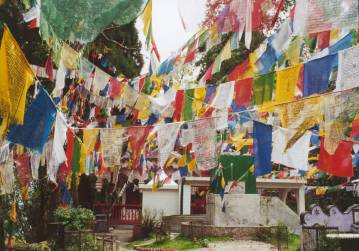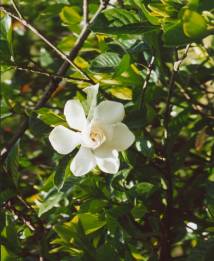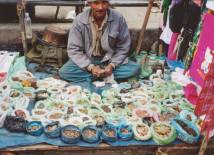
INDIAN HILLS

Multi-coloured
flags spill all over the sacred viewpoint at Observatory hill in Darjeeling, a
place sacred for Hindus and Buddhists alike. The shrine, which originally graced
the hill, was transferred to a monastery location not far from Chowrasta, the
library of which houses the original manuscript of the Tibetan Book of the Dead.
My
Tibetan friend sent me this description of prayer flags, which I purchased in
Darjeeling. I reproduce his words
as received:
“Here is a brief
description about the prayer flags:
1~ Sky Blue ( nam-ngonpo )
2~ Cloud white ( tin-karpo )
3~ Fire red ( mae-marpo )
4~ Water green ( chhu-jangu )
5~ Earth yellow( sa-serpo )
It can be erected on pole or stitch together in one rope and stretched,
following accordingly as given above,
There are many types of scripts such as prayer of different gods and goddesses
like
prayer of TARA, AVALOKITESWARA, WHITE UMBRELLA-GODDESS etc..etc..
Purpose for these flags are of-course for good luck and as well as for all the
living beings to be pulled towards the higher realms or to the path way of
nirvana. It is said when the wind blows the flags it moves the mantra which is
written will spread all throughout the world's lowest from water and highest up
to Snow mountains to help every beings. The flags are erected specially in New
year and Special days according to Tibetan astrological calculation, Everybody
has to be careful about the black day, when erecting or putting-up the prayer
flags, because we believe that erecting or putting-up the prayer flags on the
black day will bring the person bad luck until the flags are finished or
destroyed. Such days are known in Tibetan calendars.
How do we erect or put up the prayer flags??
We first make prayers for all living being's happiness and then erect or put-on
the flags, after that to each flag we make white marking by flour (Tsampa)for
good Omen and burn some incense and everybody surround in one line taking
handful of Tsampa in each person's hand, holding everybody's hand highup in
front of our own faces three time and each time we hold our hands upwards we
make sounds like:
SOOOOO..
like this we make three time(SOOO..SOOO..SOOO) and in forth time we release the
Tsampa from everybody's hand to the sky and shouts like :
...KI - KI SO - SO
LHA GYALLO ( Glory to
the Gods )
Some people put the Tsampa to each others hair and this means like wishing themselve live for long life until the greyhair comes. After that we sit together and eat, drink, and maybe sing and dance like celebrating.”

Scenery in the Eastern Himalayas. The tree-fern Cyathea brunoniana (Wall. Ex Hook) Clarke et Bak is common in this area, as is the giant tree fern Cyathea gigantea (Wall. Ex Hook) Holtt. The soft pith of C. brunoniana is said to be edible

Gardenia spp. growing near Gantok, believed to be G. kirkii. Gardenia flowers are not raised by the Indian flower trade, although some species are found in gardens. The young shoots of G. gummifera L. is the source of Dikamali gum, used to rub on the gums of infants when teething.
 Market trader,
Darjeeling. Basically 2 types of herbal system survive in Sikkim - the Nepali
system (Jaributi) and the Tibetan system. The former system often uses single
unprocessed material in its natural form (roots, seeds, twigs etc.) whereas the
Tibetan system uses a mixture of powdered herbs and extracts which act
synergistically to treat the condition. In addition various non-vegetable
additives (gold, pearl etc) are included. Some herbs identified in herbal
trading from by Biswas (1956) include Chaulmoogra, Lycopodium, Aconite, Kuth
etc. and it would appear that subsequently that over-exploitation of herbal
resources has lead to virtual extinction of some formerly common Sikkim species
e.g. Podophyllum hexandrum, Jatamansi etc.
Market trader,
Darjeeling. Basically 2 types of herbal system survive in Sikkim - the Nepali
system (Jaributi) and the Tibetan system. The former system often uses single
unprocessed material in its natural form (roots, seeds, twigs etc.) whereas the
Tibetan system uses a mixture of powdered herbs and extracts which act
synergistically to treat the condition. In addition various non-vegetable
additives (gold, pearl etc) are included. Some herbs identified in herbal
trading from by Biswas (1956) include Chaulmoogra, Lycopodium, Aconite, Kuth
etc. and it would appear that subsequently that over-exploitation of herbal
resources has lead to virtual extinction of some formerly common Sikkim species
e.g. Podophyllum hexandrum, Jatamansi etc.
Ref: K. Biswas (1956) Common Medicinal Plants of Darjeeling & Sikkim Himalaya M/S Bengal Govt. Press, W. Bengal.





Real Aromatherapy in the Indian Hills
Copyright © 2001 by Tony Burfield. All Rights Reserved.